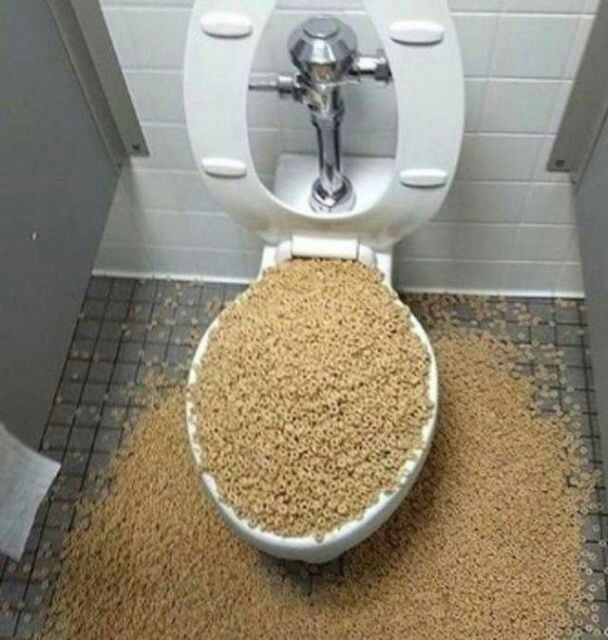Can One to Flush Food Down the Toilet?
Can One to Flush Food Down the Toilet?
Blog Article
Right here in the next paragraphs you can discover a bunch of very good advice around What Can Happen If You Flush Food Down the Toilet?.

Intro
Lots of people are commonly faced with the issue of what to do with food waste, especially when it involves leftovers or scraps. One usual inquiry that arises is whether it's fine to purge food down the commode. In this short article, we'll delve into the reasons people may think about flushing food, the repercussions of doing so, and alternative techniques for proper disposal.
Reasons why people may think about purging food
Lack of awareness
Some individuals might not know the prospective harm caused by flushing food down the commode. They might erroneously believe that it's a safe practice.
Convenience
Flushing food down the bathroom may seem like a fast and easy option to disposing of unwanted scraps, particularly when there's no neighboring garbage can available.
Negligence
In some cases, individuals may merely pick to flush food out of large negligence, without considering the effects of their actions.
Consequences of flushing food down the bathroom
Ecological influence
Food waste that winds up in waterways can add to pollution and damage marine environments. In addition, the water made use of to flush food can strain water resources.
Plumbing issues
Flushing food can result in stopped up pipelines and drains, causing pricey pipes fixings and inconveniences.
Kinds of food that need to not be purged
Coarse foods
Foods with coarse structures such as celery or corn husks can obtain entangled in pipes and trigger blockages.
Starchy foods
Starchy foods like pasta and rice can take in water and swell, resulting in blockages in pipelines.
Oils and fats
Greasy foods like bacon or cooking oils must never be purged down the toilet as they can strengthen and create blockages.
Appropriate disposal methods for food waste
Making use of a waste disposal unit
For homes equipped with waste disposal unit, food scraps can be ground up and flushed with the plumbing system. However, not all foods appropriate for disposal in this fashion.
Recycling
Certain food product packaging materials can be reused, minimizing waste and decreasing ecological influence.
Composting
Composting is an environment-friendly way to take care of food waste. Organic materials can be composted and made use of to enhance soil for horticulture.
The significance of appropriate waste management
Minimizing environmental harm
Correct waste administration techniques, such as composting and recycling, aid lessen air pollution and maintain natural deposits for future generations.
Protecting plumbing systems
By avoiding the practice of flushing food down the toilet, house owners can prevent pricey pipes repair services and preserve the integrity of their pipes systems.
Final thought
To conclude, while it might be appealing to flush food down the commode for convenience, it is essential to recognize the prospective repercussions of this activity. By embracing correct waste management methods and dealing with food waste properly, people can contribute to much healthier plumbing systems and a cleaner environment for all.
FLUSH FOOD DOWN THE TOILET?
FLUSHING FOOD CAN CAUSE BLOCKED DRAINS IN YOUR HOME
All of the plumbing fixtures in your home are connected to the same sewer pipe outside of your home. This outdoor sewer pipe is responsible for transporting all the wastewater from your home to the Council sewer mains. Even small pieces of food that go down the kitchen sink can cause problems for your sewer. It should therefore be obvious that flushing larger bits of food, such as meat, risks a clog in either the toilet itself or the sewer pipes. Flushing greasy food is even more problematic because oil coagulates when it cools, coating the interior lining of your pipes.
THE TOILET IS NOT A BIN
Food isn’t the only thing that people shouldn’t be flushing down the toilet. People use the toilet to dispose of all kinds of things such as tampons, makeup wipes, dental floss, kitty litter and even underwear. Water goes to great lengths to educate residents about the high costs and stress placed on wastewater treatment systems simply from people flushing the wrong stuff down the toilet. It costs taxpayers millions of dollars each year, and homeowners thousands in blocked drain repairs.
FLUSHING FOOD IS A WASTE OF WATER
Flushing food is a waste of our most precious resource - water. In June this year Level 1 water restrictions were introduced to protect water supply from drought conditions. Much of New South Wales continues to be affected by prolonged drought with recent figures revealing up to 97 per cent of the state remains in drought. Depending on whether you have a single or dual flush toilet, every single flush uses between five and 11 litres of water. In the current climate this is a huge amount of water to be wasting on flushing food that should be placed in the bin (or better yet, the compost).
https://www.jabplumbingsolutions.com.au/blog/can-you-flush-food-down-the-toilet

I ran across that piece about Flushing Food Down the Toilet? while doing a lookup on the web. Don't hesitate to take a moment to distribute this blog posting if you enjoyed it. Thanks a bunch for being here. Revisit us soon.
Explore Report this page